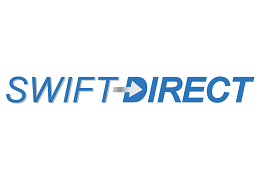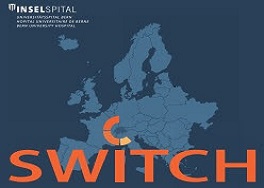Main Clinical Trials
Ongoing clinical trials of the Stroke Research Center Bern
ELAPSE
Early closure of Left atrial Appendage for Patients with atrial fibrillation and ischemic StrokE despite anticoagulation therapy
ELAPSE is a multicenter, prospective, randomized, open label, blinded endpoint (PROBE) trial utilizing an adaptive statistical design comparing the rates of recurrent vascular events in patients with atrial fibrillation suffering an ischemic stroke despite taking oral anticoagulation. This trial has two balanced treatment arms, offering a strategy of left atrial appendage occlusion in addition to anticoagulation in the experimental arm. The standard arm is defined as continuing anticoagulation without closing the left atrial appendage. Up to 1000 patients will be randomly assigned to either the standard or the experimental arm with a ratio of 1:1.
TECNO
Safety and Efficacy of Intra-Arterial Tenecteplase for Non-Complete Reperfusion of Intracranial Occlusions
TECNO is a multicenter, prospective, randomized, open label, blinded endpoint (PROBE) trial utilizing an adaptive statistical design comparing the rates of early and late reperfusion in patients with incomplete mechanical thrombectomy treated either by IA TNK or by best medical treatment BMT. This trial has two balanced treatment arms, with the IA TNK being the experimental arm. The standard arm is defined as BMT after incomplete MT. 156 patients will be randomly assigned to either the standard or the experimental arm with a ratio of 1:1 (78 patients per group).
Finished studies of the Stroke Research Center Bern
ELAN

ELAN: Early versus Late initiation of direct oral Anticoagulants in post-ischaemic stroke patients with atrial fibrillatioN
The ELAN trial investigated the timing of initiating therapy with direct oral anticoagulants (DOACs) after an acute ischemic stroke in patients with atrial fibrillation (AF). Although the study didn't formally test the noninferiority or superiority of early versus delayed treatment, the primary composite outcome, which included recurrent ischemic stroke, symptomatic intracranial hemorrhage, major extracranial bleeding, systemic embolism, and vascular death at 30 days, numerically favored more-prompt treatment (2.9% vs. 4.1%). The risks of recurrent ischemic stroke and systemic embolism also tended to be lower with earlier DOAC treatment. Safety data showed only two symptomatic intracranial hemorrhages in each group. The results suggest that early initiation of DOAC therapy after an acute ischemic stroke in AF patients is reasonable and unlikely to cause harm. The study may encourage clinicians to start DOACs sooner, particularly after minor and moderate strokes. However, it's important to note that the study did not include very severe stroke cases as well as relevant hemorrhagic transformation (PH2).
SWIFT DIRECT and IRIS Collaboration

SWIFT DIRECT: Solitaire™ With the Intention For Thrombectomy Plus Intravenous t-PA Versus DIRECT Solitaire™ Stent-retriever Thrombectomy in Acute Anterior Circulation Stroke
The SWIFT-DIRECT trial investigated, whether in those patients presenting with a large vessel occlusion to a center capable of performing mechanical thrombectomy, additional intravenous thrombolysis offered any benefit. The trial could not demonstrate non-inferiority of the direct mechanical thrombectomy approach and numerically favoured the group receiving bridging intravenous thrombolysis. The IRIS collaboration pooled the results of six similar randomized controlled trials and could also not show non-inferiority of the direct mechanical thrombectomy approach skipping intravenous thrombolysis in such patients. However, the potential benefit of bridging intravenous thrombolysis was small – if present. Future subgroup analyses of the IRIS collaboration will analyze, whether specific subgroups of patients could benefit from one or the other strategy.
SWITCH

SWITCH: Decompressive Hemicraniectomy in Intracerebral Hemorrhage
The primary objective of this international randomized controlled trial is to determine whether decompressive surgery and best medical treatment in patients with spontaneous ICH will improve outcome compared to best medical treatment only.
